Last week we covered a number of the distant sights . This week, a couple of spots closer to home and a little on Palermo, our base for the past fortnight. We round it out with something on our trip from Palermo to the Salerno area in Campania.
Mondello
Mondello is Palermo's version of Oriental Parade on a much larger scale, with a long curving stretch of golden sand. The waters are quite clear [even on a very cloudy about-to-rain day] and it is rated by Palermanese as one of the places to be during the summer. Many homes fall into the palazzo category. Originally, however, it was [and part of it still remains] a fishing village. There is an old tuna factory [still working up till the early 20th Century], in the northern end of the town and a 15th Century cylindrical watchtower stands alone on the edge of the bay. In the centre of the bay front is the 1912 bathing establishment which is reminiscent of late 19th Century beach piers on the English south coast. The structure has stood up reasonably well to the salt water and occasional stormy conditions . The waters seemed to have all kinds of fish and we spotted some snorkellers who had caught, among other things, moray eels.
The day that we visited, it was overcast and threatening to bucket down. We had a seafood lunch on the waterfront, recommendation from our landlord. Food was good but not the best we have had. And sitting on the outer edge of an open fronted restaurant was a little cool on us and the food. Pity because it would have been much better hot - aperativo of fish cubes with aubergine, seafood salad [octopus, mussels, calamari] and crumbed fried sardine fish balls with a separate dish of sautéed mussels. The seafood salad and the mussels were the best of the dishes. Pity the mussels got cold.
Overall, Mondello is a nice town and in the summer would be a lovely stopover [you would only have to share it with 50,000 other sun worshippers].
Cefalu
Cefalu town is tucked into the base of a headland beneath the heights of La Rocca, a crag that towers almost 300 metres above the town . The view from the top is simply magnificent on a clear day and [when we got back our breath and were reasonably sure that we weren't having a heart attack], we soaked it up. Unlike the song, we couldn’t see forever but we could see Palermo about 50 kms in a straight line further west and 50 kms to the north east, the Aeolian Islands. The Rocca is topped with a Norman fortress built in the 11th and 12th centuries. The waters off Cefalu [and Sicily, in general] are a bright blue, every bit as good in real life as the tourist photos profess them to be.
Cefalu was inhabited back about 3000 BC. Legends and myths suggest that the first inhabitants were descendants of Noah but the academic world would rather believe that they were the Sicani followed by the Phoenicians. The promontory high above the town bears traces of most of the outsiders who visited and ruled over the years. There are two caves on the northern side of the "fortress" that can be dated back to the 5th Century BC and there is the Temple of Diana about half way up the hill from the same period .
Under the Greeks, Romans, the Byzantines, the Arabs and finally, the Normans, the town flourished. Led by the Great Count Roger, the Normans captured the town from the Arabs in 1063 and under his son, Roger II [Guess if he was better he would have been Greater Count Roger], Cefalu renounced Mohammed and returned to Christianity. Roger II marked this success by building two major churches in the town, the Church of St. George (1129) and, then, the Cathedral (1131). The Cathedral carries some of the rich trappings of Monreale’s Cathedral in the apse but the rest of its interior has a simple clean white finish.
From that period, however, Cefalu’s star waned somewhat for over 500 years before being "rediscovered" by the outside world. In the mid-1700s, a number of European countries established consulates in the town and it began to be included in the European Grand Tour itinerary. Eventually, after a period of rebellion against the rule of the Bourbons, Cefalu opted to join Garibaldi’s movement to unify Italy .
Today, Cefalu [pop ~14,000] rates as one of Sicily’s prime summer resorts. The local population trebles over August, the Italian holiday period. Those whose shops and restaurants were closed when we arrived in Milan and Turin four months ago, if they hadn’t headed for the Lakes in the North, were probably sunning themselves on the beach at Cefalu.
Palermo
Prior to leaving NZ, we had been warned that Palermo was second only to Naples for pickpockets, thieves, con men and the "men in black". We can report that none of those potential threats presented themselves [at least to us] during our stay. In fact, we felt entirely welcomed by just about everyone we met.
Palermo’s history has been anything but stable as the town passed from one dominating power to another with remarkable frequency. Its strategic position in the middle of the Mediterranean brought wave upon wave of invaders including the Phoenicians, Carthaginians, Greeks, Romans, Saracens, Normans, Swabians, Spanish and the French Bourbons just to name the most influential . The result of this quilted history has led to the wide range of architectural styles, an intriguing fusion of ingredients used in many local dishes, and in many place names which are obviously not of Italian origin.
We have included some of our shots of the city as we saw it. To try to explain what we saw [and lots that we did not get to see] would not do Palermo justice, so we have included a couple of YouTube clips which will give you a better feel for the city:
- http://www.youtube.com/watch?v=FAeEnXtg65g [almost 10 minutes] Gives you a series of stills on some of the major sights
- http://www.youtube.com/watch?v=Okd4CQBq0-o [one minute] We had taken our own video, but after editing out the bad language [ours], and the fearful shaking of the camera [ours also], it was only 2 seconds long. So we found this clip as a replacement. It gives you a small insight into driving in Palermo [and Italy generally]. They don’t go through any of the busier roundabouts which can have slip roads feeding into the off ramps making life even more interesting. And there is always someone at the centre of the circle who wants the next off ramp, just as you are about to drive past it.
Palermo [pop ~ 635,000] is a city of crazy contrasts; fascinating old ruins and extravagantly decorated buildings sit next to poverty and eyesores of buildings long dead with just their skeletons providing evidence of a previously grander life; works by European masters on display in buildings rubbing shoulders with an Arab-style noisy open market; people coming out of the aforementioned luxury shops with loaded shopping bags and the beggars at every set of traffic lights and the front doors of major churches, working hard to tweek your conscience. A rich but ragged capital, one which reflects the extremes of the "haves" and the “have nots”, something that it has done over the centuries.
The major churches and palazzos, the huge Fontana Pretoria and the large parks and gardens are symbols of its former ruling classes - the clergy and the aristocracy. This is countered, however, by a significant beggar population which seem to have honed their guilt giving skills to a fine edge . And in between, everyone else concentrates on getting on with life and carving out a living for themselves and their family. We gave a bag of clothing we were discarding to a beggar woman working a corner near us, and were delighted that after walking a few metres she stopped, pulled out a jacket and put it on. Instant positive feedback.
We have talked about food quite a bit in the previous episodes and the fact that great food starts with great produce. In Italy, for “great” read FRESH produce. The place where the serious foodies shop is at the fresh food markets and the markets in Palermo are quite something. They are open Monday to Saturday although some of the non-Catholic vendors are quite prepared to make it a seven day operation. The markets are noisy, crowded and generally assail the senses with sights, sounds and smells of a very active "foodies’ heaven". We managed to visit three of the main ones and witnessed first-hand the day-to-day living of local home makers .
- La Vucciria. The most famous Palermo market and open from around dawn until 2 pm (as are most of the markets in the city). All kinds of fresh seafood, herbs, and local produce are on offer, but if it’s produce you are after, you need to get there before about 10 am to get the best offerings. Because it is immediately adjacent to Via Roma, one of the two main retail streets in Palermo, La Vucciria has become very touristy and we were told that many locals tend to shun it for one of the next two markets.
- Mercato di Capo. Though the Capo market sells a variety of goods, locals tended to bypass them in favour of the food. The street vendors have all the local delicacies - fruit, vegetables, meat, fish, cheese and bread. The stall holders from South Asia appear to have cornered the cell phone cover/ tools/electronics market; indeed, we have never seen as many cell phone covers in the same place in our life. Sad to report they are targeting the newer models – nothing there for an original model iPhone.
- Ballaro. While primarily a food market, the Ballaro market is also a street eater’s Italian fast food delight. It is also home to many discount clothes sellers [virtually all of the items on sale seem to come from the People's Republic.]
Back to some foodie delights. Over the past fortnight, we have had some really memorable seafood meals. [In fact, we have probably had more seafood meals over the past six weeks than we had had in the previous six years.] With one or two exceptions, all have been really splendid.
We had the team’s second significant birthday while in Palermo and as our host had left a list of interesting sites, shopping areas and most important of all, good restaurants, we decided to check out one of his recommendations for the auspicious occasion. When we eventually arrived at the address recommended, we could not locate the restaurant, so did a bit of online research [steam driven iPhone originals can still cope with this sort of thing] and established that the restaurant had moved to a new spot just around the corner . The restaurant, close to the waterfront, cooked all of its dishes outside on the side of the road on an split 44-gallon drum barbeque pit and looked very rustic. However, we are pleased to report that the end product was delicious: mixed barbeque seafood – huge prawns, calamari, octopus and swordfish accompanied by the house white. All round, another success.
Later in the stay, as we indicated last week, we visited Marsala. While there we visited an enoteca [wine shop] to do a little marsala sampling, and after making some purchases, asked the owner where he would go for lunch and he pointed to a restaurant owned by a friend of his just down the street. Obviously, this can be a bit of a lottery if the chap in question is simply pushing business towards an acquaintance. However, we lucked out and had probably our best eating out meal experience of the trip to date. Again, a seafood theme; seafood antipasti - seafood salad, crumbed deep fried calamari and baby octopus, potato mash with shrimp, and onion and cubed swordfish cured in squid ink . All of this was followed by Zuppa di Cosse [Mussel soup]. This last dish was divine; small sweet black shell mussels in a rich tomato/white wine/olive oil/garlic/shallot soup. This one had us still dreaming [and drooling] about it several days later. So if you are in Marsala and feel like a great seafood meal, try Ristorantino Tipico Portico Blu in Via Mario Nuccio. Definitely one to add to your bucket list. Their website is <http://www.giubaldodesign.com/PORTICOBLU/>
We’ll conclude this session with our trip up to Campania yesterday. It was a long run – just under 700 kms - so we wanted to get on the road reasonably early. We had arranged with our landlord for an 8 am checkout but in reality could have left earlier. We programmed “Carla” for the journey but the street we were staying in at our destination, being so small, did not appear in her database so we just set one of the larger roads in the centre of town and would take it from there. Being the start of rush hour, it took us about 20 minutes to get through to the motorway out of the city . From there, the autostrada ran smoothly all the way to Messina. The weather at that stage was alternating between sunny skies and heavy overcast but the traffic was generally well behaved [nothing like the traffic video clip]. When we got to Messina, all went well until Carla thought we were going to cross the Straits with a different ferry company. Fortunately, after a few trips around the same roundabout, we worked out what was happening, sent her to sleep and worked out our own way for the last few kilometres. Successfully too, we might add. Boarding the ferry was again a fairly simple and quick process. Waited in the queue for only about five minutes before we started boarding. 30 minutes later we were driving off on the mainland. This time the ride cross the Straits was not as smooth as our trip across four weeks earlier and the swell was evidence of the bad weather that had dealt to the region a couple of days earlier. Sardinia had been hit particularly badly and five days later National TV, is still showing shots of the damage and clean up work . What with bad weather in New Zealand, cyclones in the Philippines and major storms over Italy, Mother Nature keeps reminding us of her presence.
About half an hour after we got off the ferry, the weather really deteriorated and we had rain from there until we reached our destination – nine and a half hours after we set off from Palermo and by now [5.30 pm], it was dark. A long day which was not yet over. We now had to find the small street and the directions that we had received from our new landlady indicated that road works in the town had blocked off a number of roads. Because Carla could not see the target road, out came the iPhone and Ipad to see if they could help. After a further 20 minutes of “trial and error” – actually, a reasonably healthy portion of the latter – we finally spotted someone walking along one of the roads and asked him. “Ah, Isabella Avellino. Park your car here and follow me”. About 150 metres later, up narrow dimly lit alleys [in the rain], we arrive at Chez Isabella . Home run almost complete. Just a matter of arranging a car park for the car [we had done one of those crazy Italian parking jobs]. Finally resolved by about 6.30 pm. We were glad to have arrived and checked in because the rain had really settled in for the night and visibility was extremely poor. Having arrived in the dark and with few lights on the approach roads to Corpo di Cava, we had no idea what our surroundings looked like.
But that is for another day. Corpo di Cava and our week in the Salerno/Amalfi Coast area next week. Not sure how much we will see because the bad weather is scheduled to last most of the week. Closing now and off to dinner.

 Corpo di Cava, Campania, Italy
Corpo di Cava, Campania, Italy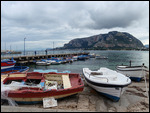
![Cefalu [from the train]](http://images2.travelark.org/images/sntj/thumbnail.large.1.1385066779.cefalu-from-the-train.jpg)
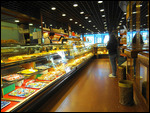
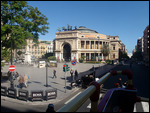

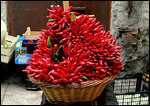
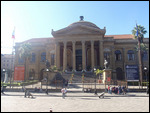

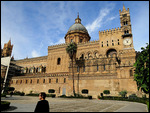
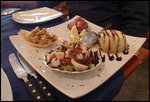
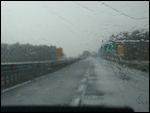
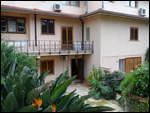

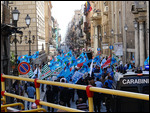




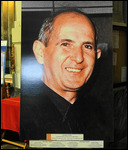
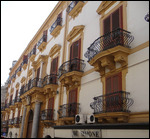

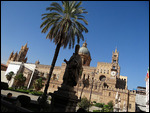


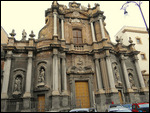
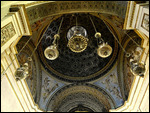





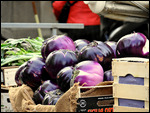
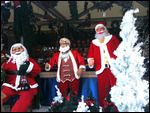
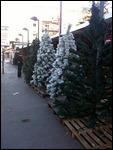


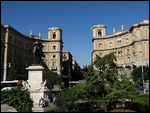
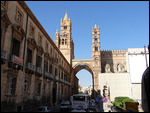
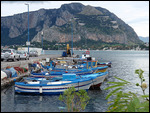
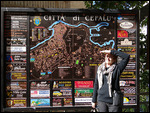
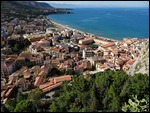
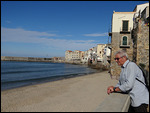
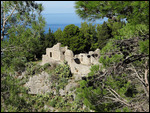
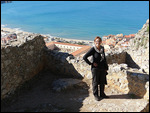
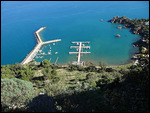
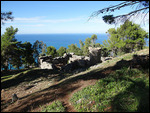
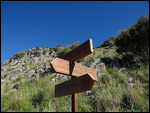
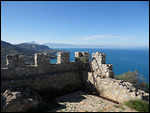
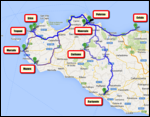
2025-05-23